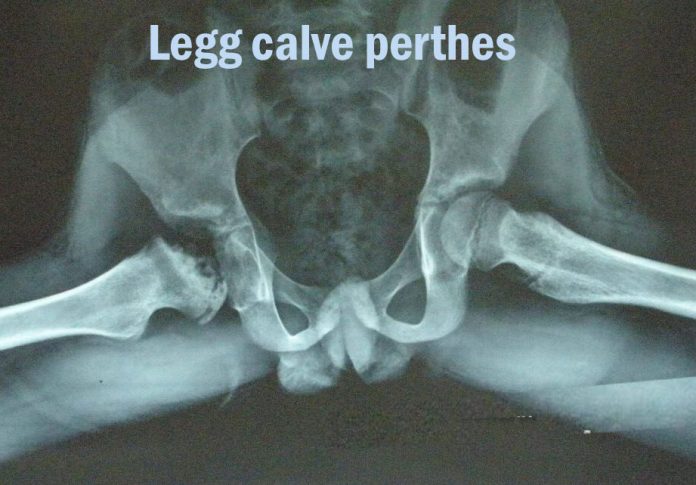Perthes disease may be a rare childhood disease that affects the buttocks. This happens once the blood supply to the round head of the thigh bone is briefly interrupted. When there is not enough blood supply, bone cells legg calve perthes die. This method is called avascular gangrene.
Although the term “disease” is still used, Perthes is definitely a luxurious staged method that may last for many years. As the disease progressed, the weakness of the parietal bone of the thigh bone (the “ball” of the hip “ball socket” joint) began to collapse little by little. Over time, the blood supplied to the vertebrae of the thigh returns and the bones begin to grow back.
Perthes’ treatment focuses on providing an additional legg calve perthes round shape for bone growth, which is also suitable for sockets of ball and socket joints. This can promote the normal movement of the ball and socket joints and prevent hip problems in adulthood.
In most cases, Perthes has a good semi-permanent prognosis for young people. After 18 to 24 months of treatment, most children resumed their daily activities without being greatly restricted.
Legg-Calve-Perthes disease, commonly referred to as Perthes disease, may be a childhood disease that affects the acetabular joint. Blood flowing to the hips does not flow to the ball of the ball and socket joint. This will cause structural damage to the ball. Perthes disease usually occurs in multiple stages within 1-2 years.
Perthes is a common way for boys to appear on each buttock only 100% of the time. At the same stage, the square of each buttock needs to be measured. Perthes usually occur in patients four to ten years ago.
Table of Contents
There are four stages of Perth disease:
Initially / gangrene. At this stage of the disease, the blood provided to the head of the limb is discontinuous and the bone cells die. The world becomes extremely inflamed and irritable, and your child may begin to show signs of illness, such as line a or a completely different way of walking. This first phase may last several months.
fragmentation. After one to two years, the human body moved the dead bone to a lower position, and the tissues of the joint animal tissue quickly became smaller and replaced with the original soft bone (“woven bone”). In this part, the bones are extremely fragile, so the femoral head is likely to collapse into a flat position.
Ossification. New, stronger bones began legg calve perthes to develop and began to form in the femoral head. The reossification stage is usually the longest stage of the disease and may last for several years.
More. At this stage, the bones re-grow, so the limbs have reached their final shape. However, the shape of the sphere may depend on many factors, as well as the degree of damage suffered by the entire crushing zone, which is also because the age of the child when he is sick affects the potential for bone regeneration.
Reason
The cause of Perth’s disease is unknown. Some recent studies have shown that the Perthes event is also genetically related, but a lot of analysis must be performed.
Symptoms
One of the earliest signs of Perthes may be a modification of the method your child uses when walking and running. Usually | the most obvious in the entire sports activities. Your child may be liable, have limited mobility or develop a special running fashion, all due to the irritability of cerebral hemorrhage. Different common symptoms include:
Pain (called “pain”) in the buttocks or groin or in different parts of the legs legg calve perthes (such as the thighs or knees).
Pain will be aggravated by activity and will be relieved at rest.
Inflammation around the buttocks can cause painful muscle cramps.
Depending on your child’s activity level, the symptoms may reappear and be reassessed after a few weeks or even months before considering doctors.
Doctor exam
After discussing your child’s symptoms and medical history, your doctor can perform a thorough physical examination.
Physical examination. Your doctor can evaluate changes in the movement of your child’s hips. Perthes usually restrict flexibility, unable to flexibly move the legs away from the body (kidnapping), and twist the legs towards the inside of the body (internal rotation).
These X-ray scans provide a lens of dense structures (such as bones), and the area units required to confirm Perthes’ diagnosis. X-rays can show the condition of the bones in the head of the leg bones and help your doctor confirm the stage of the disease.
Children with Perthes will expect to have many X-rays suitable for the treatment process legg calve perthes , which may be two years or more. As the condition progresses, X-rays usually look worse before seeing a gradual improvement.
Treatment
The purpose of treatment is to relieve pain symptoms, protect the shape of the head of the extremities, and restore traditional hip joint movement. If left untreated, the head of the extremities will deform and the matching between the entire embryoid body cavity will not be high, which may cause any hip problems in adulthood, such as the early onset of inflammatory diseases.
For Perthes discomfort, there are several treatment options. After developing a treatment plan for your child, the doctor will consider many factors, including:
The age of your child. Younger children (six years old and below) have greater potential for developing new healthy bones.
The degree of limb head injury. If one-tenth of the limbs are injured by torture, the possibility of regrowth without deformity is reduced.
The stage of discomfort when diagnosing your child. However, your child will affect the treatment options recommended by the doctor within this discomfort.
Non-surgical treatment
Observed. For very scary children (one-on-one to six-year-old children), the initial X-ray examination of the United Nations agency showed little change. In the head of the extremities, and the recommended treatment is usually direct observation. Your doctor can often monitor the child ’s victimized X-rays so that the regrowth of the positive limbs reaches the goal, because discomfort will continue.
Anti-inflammatory drugs. Pain is caused by inflammation of Coxas. Anti-inflammatory drugs such as Motrin will not reduce inflammation, your doctor may recommend them for many months. When your child enters the discomfort stage, your doctor can change the dose or discontinue the medication.
Limit activities. Avoiding high-impact activities such as running and jumping can reduce pain and protect the head of the limbs. Occasionally, your doctor may recommend the use of crutches or walking aids to prevent your child from overburdening his joints by playing golf.
Physical therapy exercises. Hip stiffness is common in children with Perthes discomfort and physical therapy exercises, and it is recommended to help restore various exercises of the hip. These exercises are usually aimed at hip abduction and internal rotation. Usually seniors or other caregivers are needed to help children complete the exercises.
Hip abduction. The child lies on his or her back, keeping his knees bent and his feet flat. He or she will push the knee out, and then squeeze the knee. The elderly should put their hands on the children’s knees to help them make greater movements.
Hip rotation
When the child is on his back and his legs are straight, the elderly should roll the entire leg in and out.
Casting and bracing. If changes in movement are restricted, or if X-rays or different image scans indicate that a deformity is forming. Then solids or struts may not be formed to maintain the top of the femur in the traditional position in the acetabular cavity.
Petrie used a stick to cast ar 2 long-legged plaster, which kept the legs spread out much like the letter “A”. Your doctor may use the original Petrie solids in nursing surgeons to have access to specific tools.
Arthroscopy. Throughout the process, your doctor can take a series of special X-ray pictures called “arthrography” to imagine the degree of deformity of the limb’s head and accurately determine the position of the limb’s head. In the “care X-ray assistant”, a small amount of dye is injected into the hip joint to form the head of the limb, which is even easier to imagine.
Limb incision. In some cases, the long muscles of the adductor groin are very tight, which prevents the hip from rotating to the correct position. Before applying Petrie plaster, your doctor can perform smaller steps to release this tightness (called a tendon incision). Throughout this quick process, your doctor will make small incisions in the muscle using skinny instruments.
Operation treatment
Your doctor may recommend surgery to re-establish the correct alignment of the hip bones and bury the top of the thigh bone deep in the socket until healing is complete. Surgery is most often recommended in the following situations:
Your child was over eight years old at the time of designation. Since older children are more likely to be deformed throughout the ossification phase, preventing injury to the head of the leg bones is even an additional necessary condition.
More than one fifth of the leg bones are broken. Keeping the head of the leg bones in a circular slot may promote bone growth into a practical form.
Non-surgical treatment did not fracture the hip in the correct position for rehabilitation.
The most common surgery to treat Perthes disease is combined surgery. In this type of surgery, the bone is cut and repositioned to keep the leg bones comfortable. This alignment is uninterrupted in place with screws and plates, and can be removed once the condition recovers.
In more severe cases and / or in older children, surgery is also required to place the ball in the cotyledonous socket. Usually, this involves cutting the femur (thigh bone) or pelvis, and usually removing both at the same time. It is also used to fix everything in place with metal plates and screws. Usually, the child is placed in solids for about six weeks during the operation; after removing the solids, a physical examination is started.
A surgical X-ray examination
In some cases, the thigh bone will align with the joint. Sometimes, since the top of the thigh bone is indeed enlarged in the entire treatment method. it is not even appropriate to insert it more closely, so the slot should be deeper. No matter which method is used, sometimes the child will be placed in a solid body for several weeks to protect the alignment.
After removing solids, treatment will be needed to restore muscle strength and change movement. Crutches or walking aids will be necessary to reduce the weight on the affected hips. In the final stage of rehabilitation, doctors can still monitor the buttocks with X-rays.
Prognosis
Most children with Perthes disease perform best and participate in traditional activities. The sphere is not spherical and can cause an inflammatory disease of the embryoid body joint in adulthood. The end result is that young people and hips keep all athletic young people healthier. In some serious cases, the shape of the top of the femur (ball and socket ball) cannot be maintained, and adolescent pain may develop, requiring any treatment.
Result
In most cases, Perthes has a good long-term prognosis for young people. They can grow into adults without other hip problems.
If deformities remain in the shape of the leg bones, there may be other problems in the future. However, if the deformed head still fits into the slot, problems can be avoided. In the case of head deformities, early onset of hip pain or inflammatory disease may occur in adulthood.








